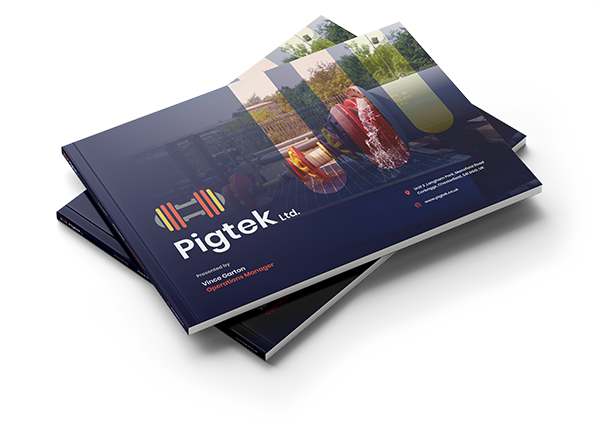4 Ways to Revolutionise Your Pipeline Pigging Procedures
Pipelines play a crucial role in the oil and gas industry, facilitating the transportation of hydrocarbons over long distances.
However, the accumulation of debris, grease, corrosion, and fractures in gas & oil pipelines poses a significant threat to flow integrity, potentially leading to accidents.
That’s where pipeline pigging procedures come into play.
In this article, we will explore four ways to revolutionise your pipeline pigging procedures, ensuring optimal flow assurance and mitigating potential risks.
1. Understanding Pipeline Pigging
Pipeline pigging is a specialised procedure that involves the use of “pipeline pigs,” devices designed to clean or inspect pipelines in upstream, midstream, and downstream oil and gas operations.
These pigs, also known as “pipeline intervention gadgets,” have evolved from early models made of straw, wire, or leather to sophisticated tools that can effectively maintain pipeline integrity.
The primary purpose of pipeline pigging is to ensure the cleanliness and structural integrity of the pipeline. It serves three main objectives:
- Cleaning: Pipeline pigs remove debris, scale, and contaminants from the pipeline walls, preventing buildup that could impede flow and lead to corrosion.
- Inspection: Pigging allows engineers to assess the internal condition of the pipeline, identifying defects, irregularities, and potential issues to proactively address maintenance needs.
- Efficiency Optimisation: By reducing friction, optimising flow, and minimising energy requirements, pigging enhances the overall efficiency of the pipeline.
2. Types of Pipeline Pigs
There are various types of pipeline pigs used in the oil and gas industry, each serving a specific purpose in pipeline maintenance and operation. Let’s explore some common types:
a. Utility Pigs
Utility pigs are versatile pigs used for cleaning, dewatering, and sealing gas pipelines. They are designed to sweep through the internal section of a pipeline, removing debris and semi-solids that obstruct or limit the flow of hydrocarbons. Utility pigs can be further divided into the following types:
- Mandrel Pigs: These pigs have a solid body with a central mandrel, providing stability and control during pipeline cleaning and inspection. They are often used for removing debris and ensuring the pipeline’s integrity.
- Solid Cast Pigs: Solid cast pigs have a compact, one-piece design without moving components. They are robust and efficient for cleaning applications, where a simple, durable design is preferred.
- Foam Pigs: Made of foam materials, foam pigs are lightweight and suitable for light cleaning and batching applications. They offer a gentle yet effective way to navigate pipelines in less abrasive environments.
- Spherical Pigs: Spherical pigs are round and often used for general cleaning and batching. Their design allows them to move quickly through the pipeline, efficiently cleaning and separating different product batches.
b. Gel Pigs
Gel pigs consist of chemical substances such as rigid polymers and high-viscosity gels. They are typically used during pipeline commissioning or maintenance, especially in “unpiggable” lines.
These lines contain internal valves, sharp bends, or special structures that could result in a stuck pig.
Gel pigs do not require a launcher and receiver system and can be used alongside other pig types to improve efficiency and prevent deterioration of primary pig components.
c. Inspection Pigs
Inspection pigs or “smart pigs” play a crucial role in inspecting the internal sections of gas pipelines ahead of remedial activities.
Equipped with electronic components such as ultrasonic sensors, RF modules, and pig gauge plates, these pigs can measure parameters like diameter, curvature, thickness, pressure, metal loss, and temperature.
Inspection pigs are capable of detecting issues such as leaks, cracks, wax deposition, and corrosion with a high degree of accuracy.
d. Speciality Pigs
Speciality pigs, also known as “plugs,” are used to seal off entire sections of pipelines during remedial activities.
They are particularly useful for pipeline cleaning without completely restricting the flow of fluids.
Pipeline maintenance service companies often employ speciality pigs to ensure efficient and effective cleaning processes.
3. Importance of Revolutionising Pipeline Pigging Procedures
To maintain optimal flow assurance and prevent potential accidents, it is essential to revolutionise pipeline pigging procedures.
Traditional pigging approaches may involve significant risks and uncertainties due to extended periods between pigging operations and unknown pipeline conditions.
By adopting innovative methodologies and technologies, pipeline engineers can improve the efficiency, safety, and cost-effectiveness of their pigging procedures.
4. Four Ways to Revolutionise Your Pipeline Pigging Procedures
a. Implement Regular Pigging Procedures
Regular pigging procedures are critical to maintaining the integrity and cleanliness of pipelines.
By establishing a routine schedule for pigging operations, engineers can prevent the accumulation of debris, scale, and contaminants, ensuring optimal flow and reducing the risk of corrosion.
Implementing regular pigging procedures also allows for proactive maintenance and the early detection of potential issues.
b. Utilise Advanced Inspection Technologies
Integrating advanced inspection technologies, such as intelligent pigs and inline inspection (ILI) tools, can significantly enhance the accuracy and efficiency of pipeline inspections.
These tools utilise sophisticated sensors and data analysis techniques to provide detailed information about the internal condition of the pipeline.
By leveraging these technologies, engineers can identify defects, irregularities, and potential maintenance needs with greater precision.
c. Optimise Cleaning Processes
Cleaning pipelines before running inspection tools is a crucial step in ensuring accurate and reliable results.
To optimise cleaning processes, engineers should consider using low-risk soft and medium-density polyurethane foam pigs initially.
These pigs can check the route through the line and push out loose debris.
If the foam pigs pass through without significant damage and minimal debris, engineers can progress to using hard-bodied bidirectional pigs for more aggressive cleaning and gauging.
This approach reduces the risk of getting pigs stuck and ensures effective cleaning before inspection.
d. Embrace Innovative Pipeline Pig Testing and Trialling
At Pigtek, we are leading the way in providing pipeline pig testing services.
By utilising these services, you ensure that the pigs are able to carry out their tasks without damaging the pipeline or compromising its integrity, saving you a lot of both time and money.
You can also utilise the pig trialling service to plan for issues and obstacles, making sure that your pipeline pigging procedure is as efficient and prepared as possible.
In conclusion, revolutionising pipeline pigging procedures is essential for maintaining flow integrity, preventing accidents, and optimising operational efficiency.
By implementing regular pigging procedures, using advanced inspection technologies, optimising cleaning processes, and embracing innovative pig testing and trialling methods, pipeline engineers can enhance the safety, reliability, and cost-effectiveness of their operations.
Stay proactive, embrace innovation, and ensure the optimal performance of your pipelines through revolutionised pigging procedures.
For more information on how to revolutionise your pipeline pigging procedures, contact us today.
 Pigtek Ltd
Pigtek Ltd





